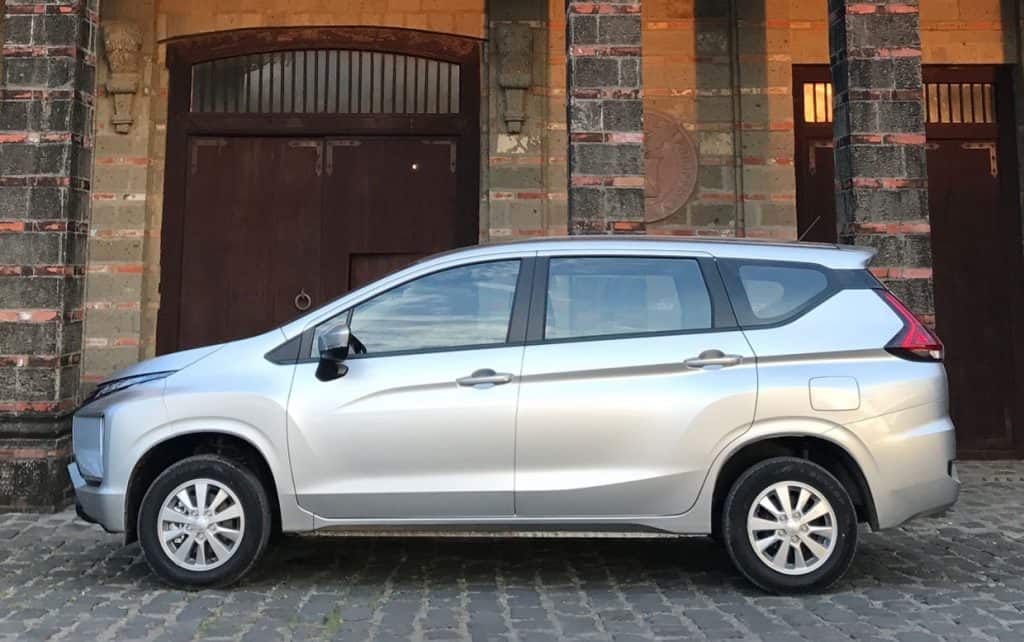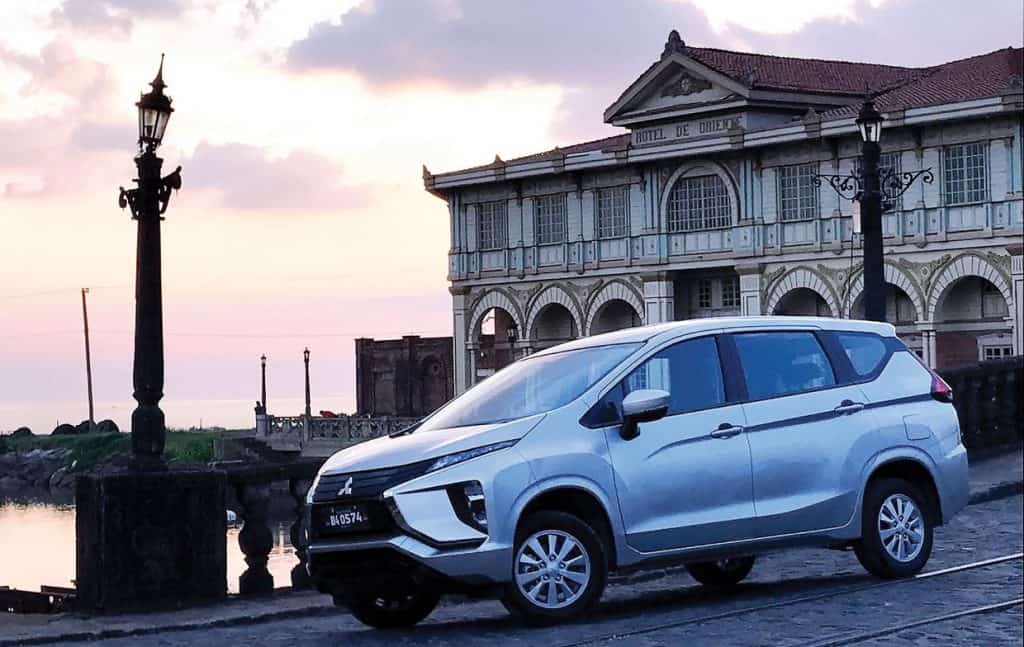Mitsubishi redefined the people-mover/MPV segment when it introduced the Xpander compact seven-seater MPV just over a year ago. The new Xpander may be late to the party, but it totally changes the game with its space-age styling and highest-in-class levels of smoothness and refinement. This despite it sharing the same template as its rivals: compact size, unit-body (monocoque) construction, front-wheel drive, independent coil spring suspensions (front MacPhersons struts/rear torsion beam), and transversely mounted 1.5-liter gasoline engines.
Still, the Xpander is notably bigger in every dimension compared to its rivals, making it the roomiest in its class.
Viewed from the front, it projects the same second-gen Dynamic Shield design as the latest versions of its Strada and Montero Sport siblings. Razor-thin LED signal lamps flow into a sleek metal louvre-like grille that opens up to a boldly gaping lower air intake to form Mitsubishi’s X-shaped Dynamic Shield front end. Further accentuating the very compelling front end design are huge side openings that house the headlamps, while the foglamps are mounted even lower at the bottom edge of the bumper. It’s easily one of the most compelling front ends in automobiledom now.
The side and rear views are more grounded compared to the front. It’s a typical two-box MPV design, highlighted by strong character lines that run across the front fender and from the front door all the way to the rear light clusters — the latter sporting the now-popular scalloped look. Flattened, flared out, and squared off fender openings give the Xpander a muscular SUV-like feel. The partially glazed-in rearmost pillar is a nice touch, adding visual interest to the rear three-quarters.

The rear end looks very upscale, thanks to L-shaped LED taillamps that wrap around to the side of the vehicle, go up towards the roof, and spreads inward to the tailgate. Subtle sculpting of the tailgate, a nicely curved and shaped backlight, and the de rigueur rear spoiler with third brake light complete the stylish rear end.
The Xpander rides on a generous 2,775mm wheelbase — the longest in its class. Inside the well-crafted and very refined cabin, car-like front seats and a flowing dashboard and console project a spacious and luxurious feel. The Xpander offers two grades of fabric seating with leather used on the steering wheel.
The seatbacks in the second and third rows easily fold down in 60:40 and 50:50 splits, respectively, to create multiple people and cargo carrying configurations. Both can also be folded flat to create a large, flat cargo area without bumps or gaps. The center backrest of the second row can also be folded down to create a wide armrest or to clear space for long and narrow items like a rolled carpet or a ladder. There is an abundance of large and small storage spaces to accommodate everything from oversized suitcases to smartphones and coins. The Xpander has a total of 16 bottle holders in the door trims and center console. It also has power outlets in all three rows as well as a 12V power outlet in the center console box.
Refinement comes from a hushed ride, and the Xpander achieves this thanks to a special windshield made from thick, high-quality soundproof glass laminated with an extra sound-absorbing layer to block out noise. Inner body panels also have vibration- and sound-absorbing materials. Even the airconditioner (eight positions in the front and four in the rear) is designed to operate silently even at max setting.

A very modern-looking multi-info LED display works with an Eco-Drive indicator to keep the driver fully informed. Infotainment is via 7-inch touchscreen with AM/FM/CD/ MP3/Aux/Bluetooth/Mirrorlink/USB/GPS connectivity and four or six speakers.
Under the Xpander’s sleek hood is a 1.5-liter 16-valve DOHC MIVEC four-cylinder engine developing 105ps and 141Nm of torque. Riding comfort is impressively high. No surprise really, as the Xpander borrows the platform from the sweet-riding Lancer EX. Its high-performance shock absorbers actually came from the legendary Lancer Evolution X.
The Xpander’s advanced body construction uses high-tensile-strength steel and Mitsubishi’s advanced RISE (Reinforced Impact Safety Evolution) monocoque body structure for high levels of rigidity and collision protection. It even has a built-in strut bar connecting the front strut towers — something usually seen on sports or racing cars. There are dual airbags for the front as well as three-point seatbelts for all seven occupants.
Electronic safety features include ABS for the front disc/rear drum brakes, ASC (Active Stability Control), Brake Assist, Hill Start Assist, and Emergency Stop Signal System. The Xpander also has cruise control and boasts an SUV-like 205mm ground clearance.
All things considered, the Xpander has expanded the envelope in compact MPVs. It looks great, goes well, is highly equipped, extremely versatile, and is priced right. It’s arguably the best in the game.

